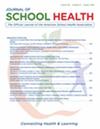Schoolyard Level Inventory for Describing the Environment: Linking High-Resolution Spatiotemporal Data to the Physical Environment to Understand Children's Physical Activity Behaviors
Abstract
Background
Schoolyards and/or playgrounds are important settings for fostering children's social, cognitive, and physical development. Optimal schoolyard design is likely an important health-promoting and equigenic strategy, but prior research does not fully consider multiple dimensions of these spaces, such as vegetation, slopes, ground cover, and equipment.
Aims
We describe the Schoolyard Level Inventory for Describing the Environment (SLIDE) a novel method to compile spatial data from multiple sources, including in-person audits (e.g., cleanliness), images (e.g., greenness), and geographic information systems (e.g., distance to road), that can be linked with children's device data.
Materials & Methods
We illustrate use of SLIDE in 91 first and second graders from three elementary schools who wore an accelerometer and global positioning system (GPS) device during school recess. Multilevel linear regression was used to test associations between 22 environmental features and children's physical activity intensity and time spent (duration of play).
Results
The auditing process took two researchers ~30 min per 1000 m2 of schoolyard. Some features were consistent across schools (flatness, grass areas, views of the school), while other features varied (views of the road, covered areas, seated areas, slides, and colorful equipment). We found significant, independent, negative associations between physical activity intensity with redness and cleanliness, and positive associations with colorful equipment and distance to road. We detected significant, negative associations between time spent with greenness and fields, and a positive association with equipment condition.
Discussion
While many of our findings align with prior research, we note that SLIDE also provides new insights including a better understanding of the complex inter-relationships between schoolyard features and outcomes. On a larger sample of more diverse schoolyards, this would allow researchers to identify which specific features should be the focus of future schoolyard designs or renovations.
Conclusion
SLIDE can be used to inform schoolyard design, assess greening or redesign interventions, and examine schoolyard inequalities, while accounting for complex inter-relationships between features.


 求助内容:
求助内容: 应助结果提醒方式:
应助结果提醒方式:


